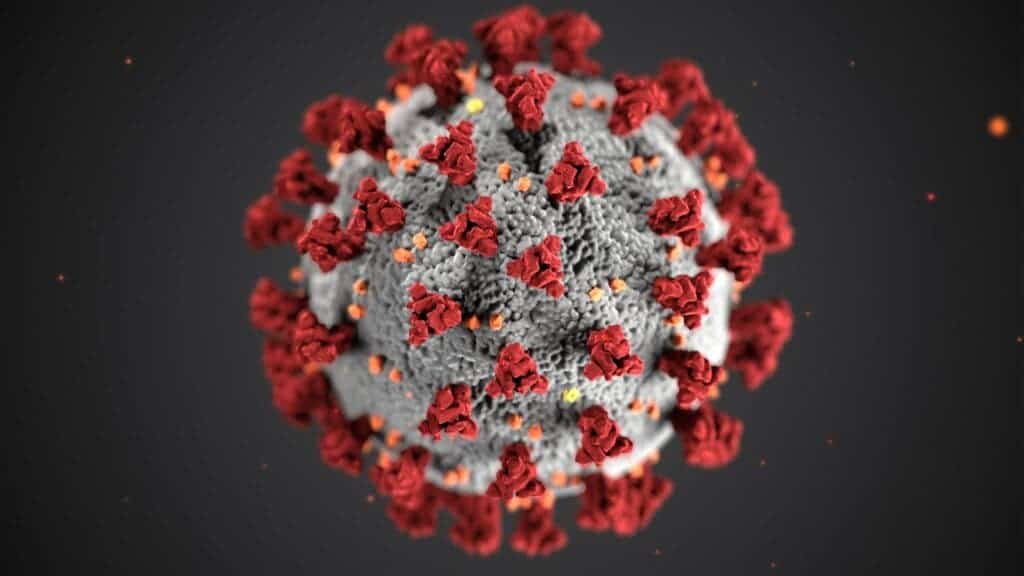A new mutation of the delta variant of COVID-19 seems to be slightly more contagious than the original delta strain. This mutation, designated AY.4.2, seems to be slowly edging delta out in the UK, where AY.4.2 has been classed as a variant under investigation. While researchers say we shouldn’t worry all that much about it, it’s a reminder that the pandemic is still not over.

We thought we were rid of the talk about COVID-19 strains — after all, delta seems so contagious that it just outcompetes all the other strains. But the virus doesn’t just sit still, and the more it’s allowed to circulate freely, the more the risk of new, dangerous strains rises.
What’s new with AY.4.2
There are now 75 AY lineages identified, each with different additional defining mutations in their genome. This new variant isn’t a new strain, but rather a descendant of the delta variant of COVID-19. It has two 2 mutations in its spike protein — A222V and Y145H. The spike protein is the part on the virus’ outer surface, and it’s the part it uses to get inside cells. Any mutation of the spike protein can make the virus more contagious.
However, whether these two mutations really do make it more contagious is not entirely clear yet. The first mutation (A222V) was observed in 2020 in a lineage that probably emerged in Spain — but it didn’t seem to be more contagious at the time. Instead, it’s the second (Y145H) mutation that seems to be making a difference.
We don’t really know if this mutation has any effect on immunity. It could be the case, and this is also what we’ve observed with delta, where mutations of the spike protein possibly make the strain more capable of escaping immunity, but we’re not entirely sure if this is the case with AY.4.2.
So far, no clear studies have shown that AY.4.2. is more dangerous than the original delta. So then why are we worried about it?
AY.4.2 seems to be outcompeting delta
Although it’s not entirely clear why, AY.4.2. seems to be slowly taking over from the original delta, at least in the UK — so there’s some indication that it is indeed more contagious.
“There is some early evidence that it may have an increased growth rate in the UK compared to Delta”, said the UK Health Security Agency (HSA). However, the agency added that “more evidence is needed to know whether this is due to changes in the virus’ behavior or to epidemiological conditions”.
Authorities learned that cases with the mutation rose from 3.8% in early September to nearly 6% by Early October. Now, cases are close to 10%.
Another way of looking at it, from evidence existing in the UK, is that AY.4.2 has a secondary attack rate (the probability that an infection occurs among susceptible people within a specific group) of 12.4%, whereas, for delta, it is 11.4%. Without AY.4.2 and no other changes, the number of cases in the UK would have been about 10% lower.
Delta’s advantage compared to other strains was striking, whereas this one seems to be a smaller (but still important) difference.
Does AY.4.2 lead to more severe illness?
The simple answer is ‘we don’t know yet’.
So far, based on admission to the hospital, this doesn’t seem to be the case. But there are many confounding factors that could be at play. It could be that most cases happened in vaccinated or younger people, who are less vulnerable to the disease.
“These analyses do not adjust for crucial factors that can influence outcomes such as age and vaccination status and should be interpreted with caution,” the UK HSA noted on Oct. 22.
In terms of jabs, there is no indication that the mutation makes the virus more resistant to vaccines. So far, it seems like vaccines are still very effective against it. However, larger studies correlating infection with hospitalization (and excluding other variables) are needed to assess if this new subtype is more severe.
Where has AY.4.2. been detected?

The vast majority (96%) of AY.4.2. cases have been detected in the UK. However, it has been detected in 30 other countries, mostly in Europe, but also in the US, India, and Canada. It seems to be lingering in Denmark, but appears to be falling off in other countries like Germany and Ireland. Writing on Twitter, Professor Francois Balloux, director of the University College London (UCL) Genetics Institute, explained that AY.4.2 appears to be mostly limited to the UK and “remains exceptionally rare anywhere else”.
It’s not clear why it seems to be doing so well in the UK but not particularly well in other parts of the world.
Are researchers studying it closely?
Absolutely.
The UK has classed it as a Variant Under Investigation (not Variant of Concern, which would have been a stronger designation), which means that the HSA is monitoring it to understand its properties. Researchers from other countries are now also on alert and monitoring if the proportion of AY.4.2 cases is growing.
It’s too early to tell if this is shaping up to be a new dominant lineage.






